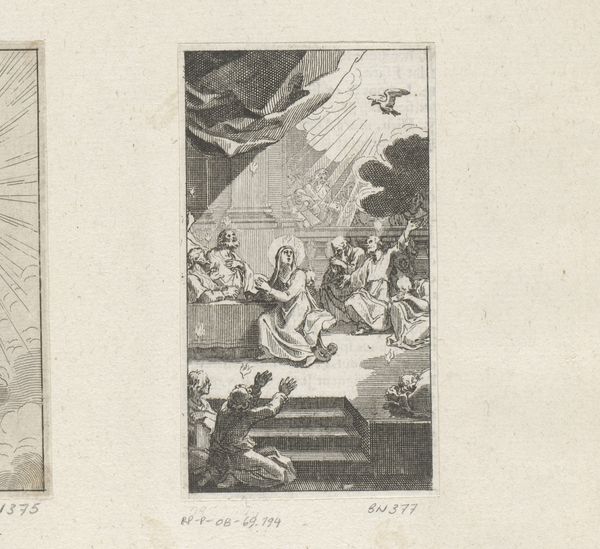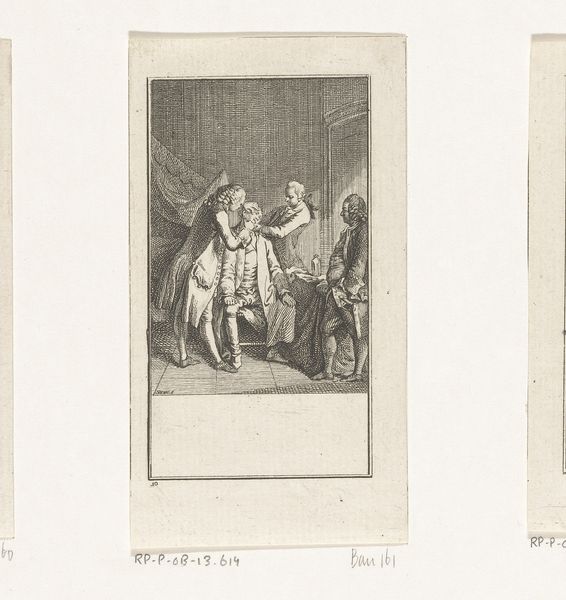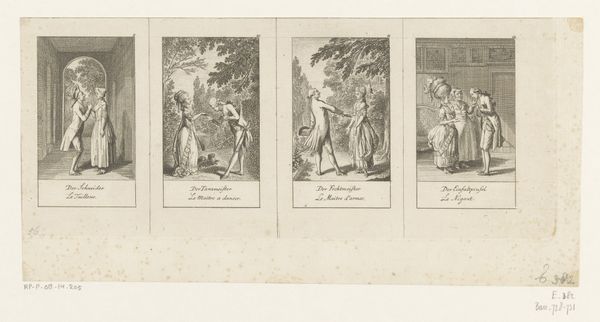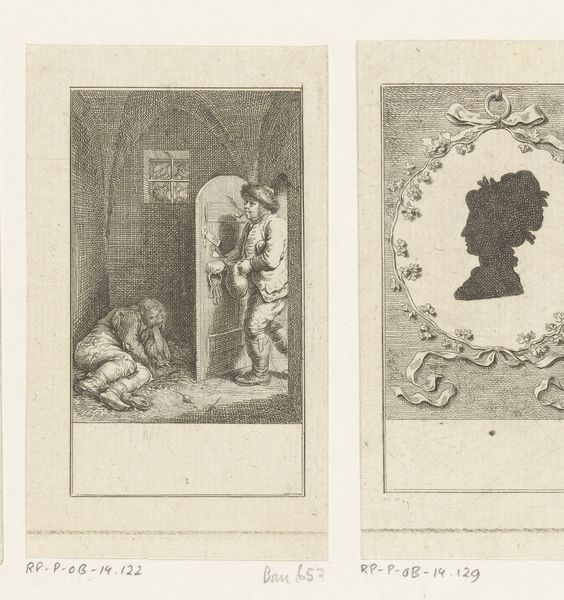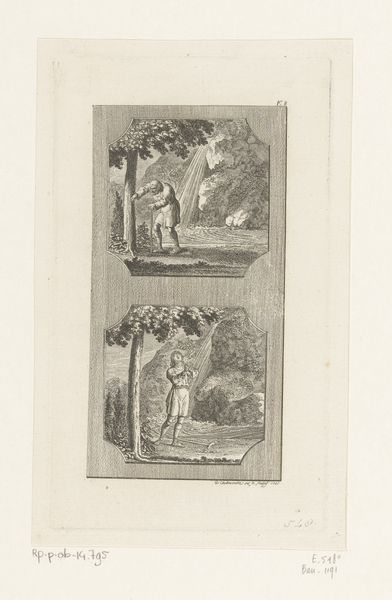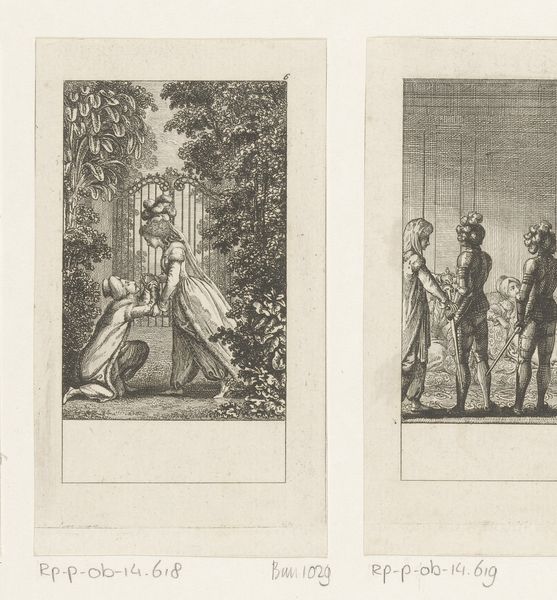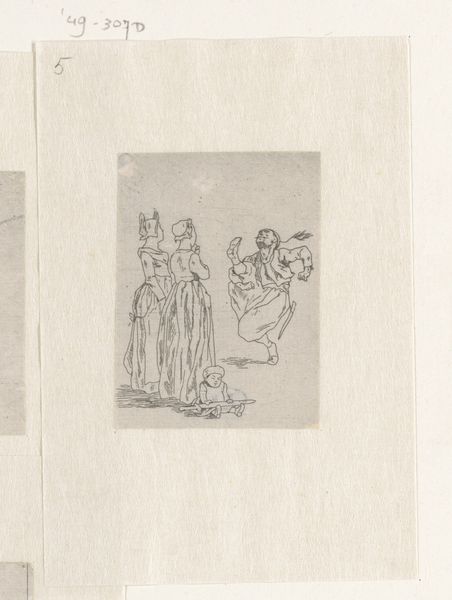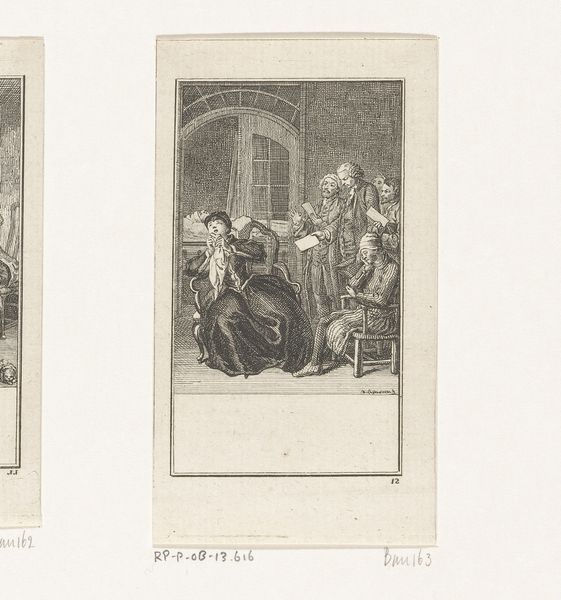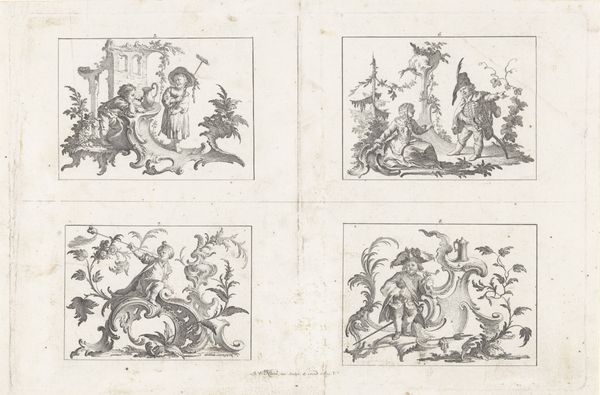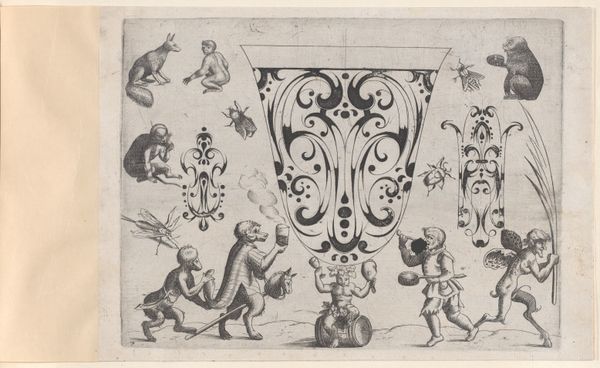
print, engraving
#
baroque
# print
#
figuration
#
line
#
history-painting
#
engraving
Dimensions: height 108 mm, width 63 mm
Copyright: Rijks Museum: Open Domain
This is Sébastien Leclerc’s etching of the Immaculate Conception, made in the late 17th century in France. The image captures a key moment in Catholic theology: the belief that Mary, the mother of Jesus, was conceived without original sin. Leclerc employs a visual language deeply rooted in religious doctrine. Mary is surrounded by light, angels, and symbols of purity, all reinforcing the divine nature of the event. The kneeling figures below emphasize the faithful’s awe and reverence. France at this time was under the devoutly Catholic Louis XIV. The Church held immense power, and art served as a tool for religious instruction and the reinforcement of social order. Leclerc, working within this environment, creates an image that upholds traditional beliefs and reinforces the Church's authority. To understand Leclerc's work fully, one might delve into theological texts, explore the patronage networks of the time, and examine the role of religious art in shaping public belief. Only then can we appreciate the complex interplay between art, religion, and society in 17th-century France.
Comments
No comments
Be the first to comment and join the conversation on the ultimate creative platform.
